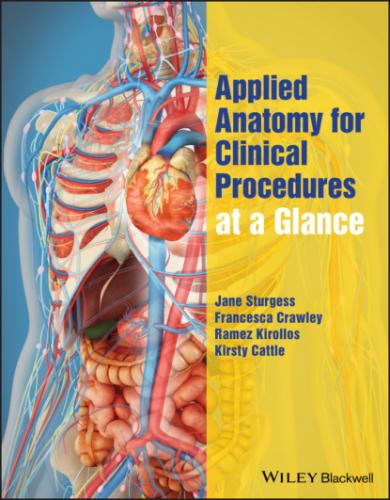39 37 Defibrillation Equipment (Figure 37.1) Technique Aftercare Common anatomical pitfalls Top tips
40 38 Spinal injection Equipment (Figure 38.1) Technique Aftercare Common anatomical pitfalls Top tips Difficulty aspirating CSF Safety (Figure 38.5)
41 39 Epidural injection Equipment (Figure 39.1) Technique Aftercare Common anatomical pitfalls Top tips
42 40 Procedure‐related safety The problem Definitions (as per the World Health Organisation) The response Responsibilities for National Health Service (NHS) and staff Top tips (from the World Health Organisation) References Additional reading
43 Index
List of Illustrations
1 Chapter 1Figure 1.1 Equipment.Figure 1.2 Before scrubbing, don hat, mask, eye protection.Figure 1.3 Recommended handwashing technique.Figure 1.4 Procedure. (a) Wash hands and arms three times (b) rinsing from f...
2 Chapter 2Figure 2.1 Equipment.Figure 2.2 Apply the antiseptic to the operating field in a radial or concen...Figure 2.3 Cover the edges of the operating field with sterile drapes, adher...Figure 2.4 Use of an antiseptic impregnated incise drape reduces surgical si...Figure 2.5 Use sterile drapes to cover an operating trolley on which operati...
3 Chapter 3Figure 3.1 Three‐way tap. Note the arrows on the limbs to indicate flow of f...Figure 3.2 Equipment. Three‐way taps come individually or incorporated with ...Figure 3.3 Different possible positions of a three‐way tap and combinations ...
4 Chapter 4Figure 4.1 Image to show the possible types of needle tip and position of th...Figure 4.2 Butterfly needles. Note the needle length and injection port (whi...Figure 4.3 Spinal needles. Note the difference in needle diameter for each c...Figure 4.4 Cannulas. Note the difference in needle diameter and length for e...Figure 4.5 Syringes. Note the different tips of the 60 mL syringes. From lef...Figure 4.6 Urinary catheters. From top to bottom 3 way, 2 way, Curved or Cou...Figure 4.7 Urinary catheter bags. The most commonly used bag in hospital has...Figure 4.8 Commonly used blood bottles.Figure 4.9 Blood culture bottles.Figure 4.10 Sample pots. The white capped pot is suitable to collect most sa...Figure 4.11 Simple dressing pack, often used for small procedures.Figure 4.12 Large sterile pack, for central lines and more invasive procedur...
5 Chapter 5Figure 5.1 Local anaesthetics.Figure 5.2 Skin layers.Figure 5.3 Field block.Figure 5.4 Digital block.Figure 5.5 Supraorbital nerve block.
6 Chapter 6Figure 6.1 The GMC provides advice on consent, available on their website: h...Figure 6.2 Consent forms. Choose the correct form for the procedure and pati...Figure 6.3 Decision making with regard to obtaining consent and which form t...
7 Chapter 7Figure 7.1 A simple manometer line.Figure 7.2 Standard CSF manometer line; note the hollow tube, connected to t...Figure 7.3 Standard CVP manometer line showing the continuous column of flui...Figure 7.4 CSF manometer and three‐way tap setup.Figure 7.5 Equipment required for CVP.
8 Chapter 8Figure 8.1 Setting up the irrigation set. The set is primed from a single ir...Figure 8.2 Attaching the irrigation and catheter bag to the catheter. (a) At...Figure 8.3 The entire irrigation set‐up. (a) Open the flow switches on the p...
9 Chapter 9Figure 9.1 Equipment.Figure 9.2 (a) single, (b) double, (c) triple chamber underwater seals. The ...Figure 9.3 Attaching the drain to the seal.Figure 9.4 The complete set‐up.
10 Chapter 10Figure 10.1 Equipment required.Figure 10.2 Patient positioning and draping.Figure 10.3 Insertion of the catheter. Holding the penis in your non‐dominan...Figure 10.4 Male urethral anatomy.
11 Chapter 11Figure 11.1 Equipment required.Figure 11.2 Patient positioning.Figure 11.3 Female perineal anatomy.Figure 11.4 Female pelvic anatomy.
12 Chapter
